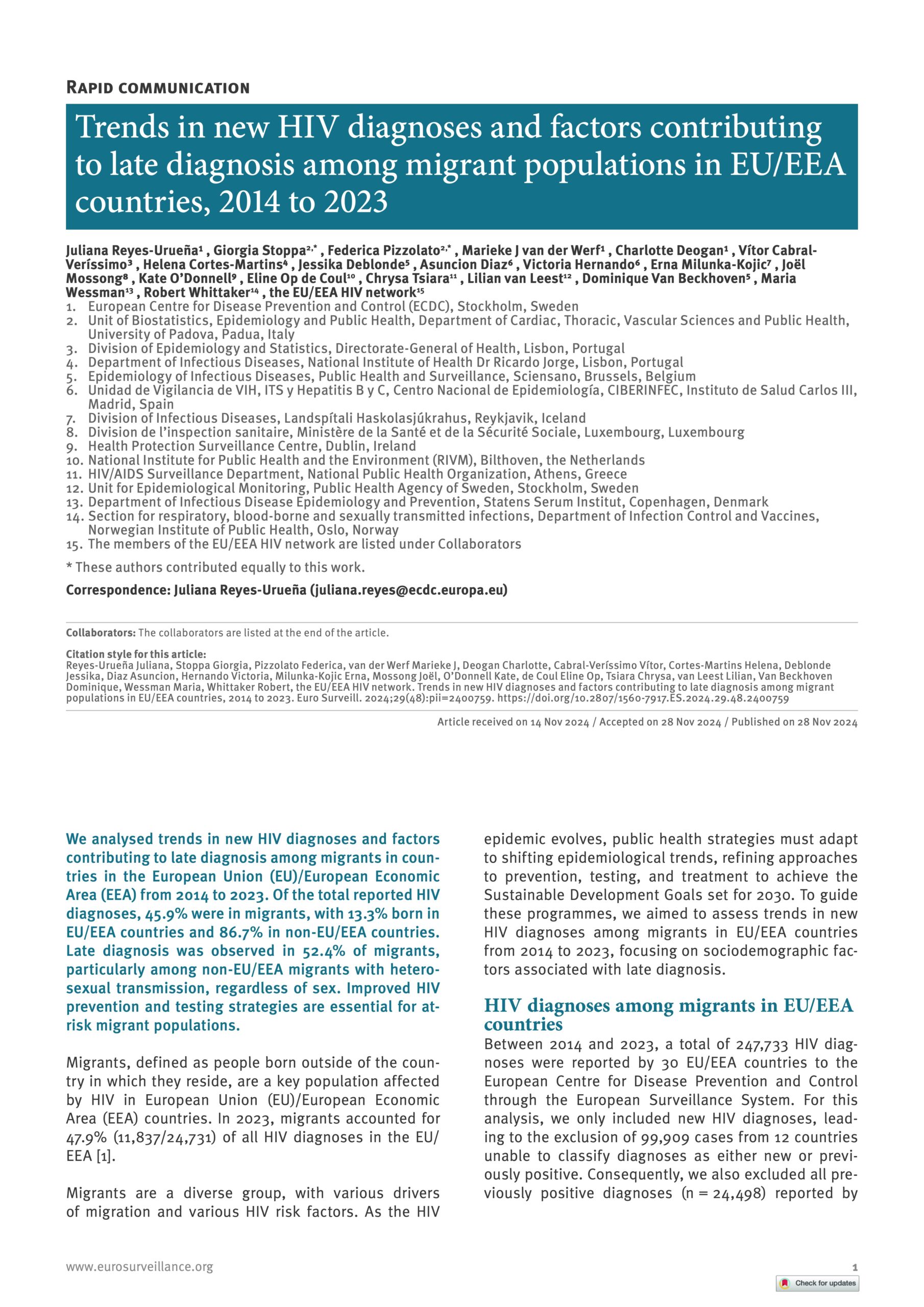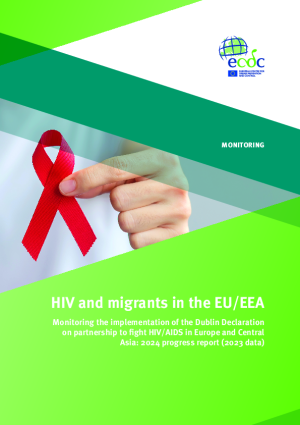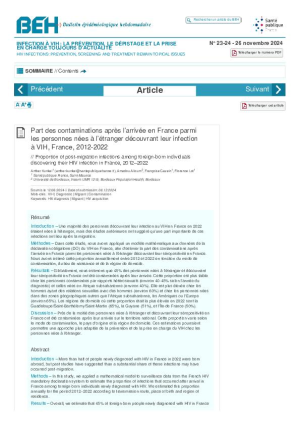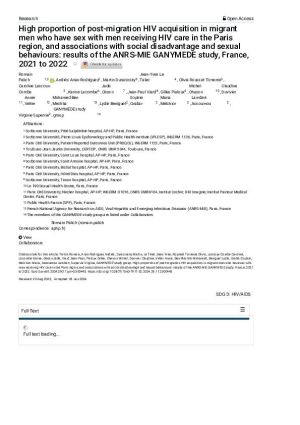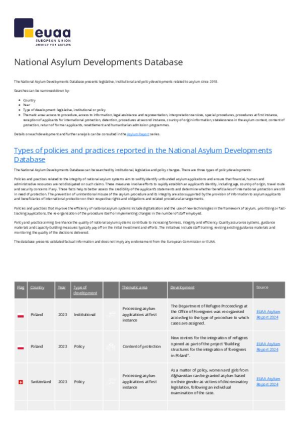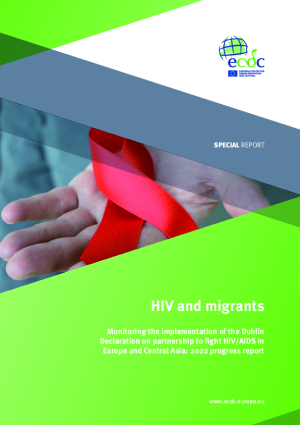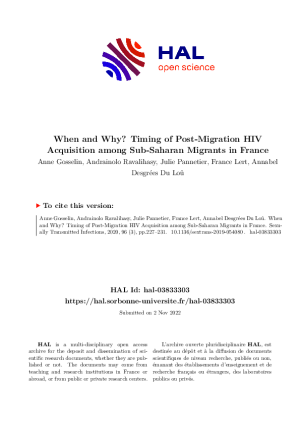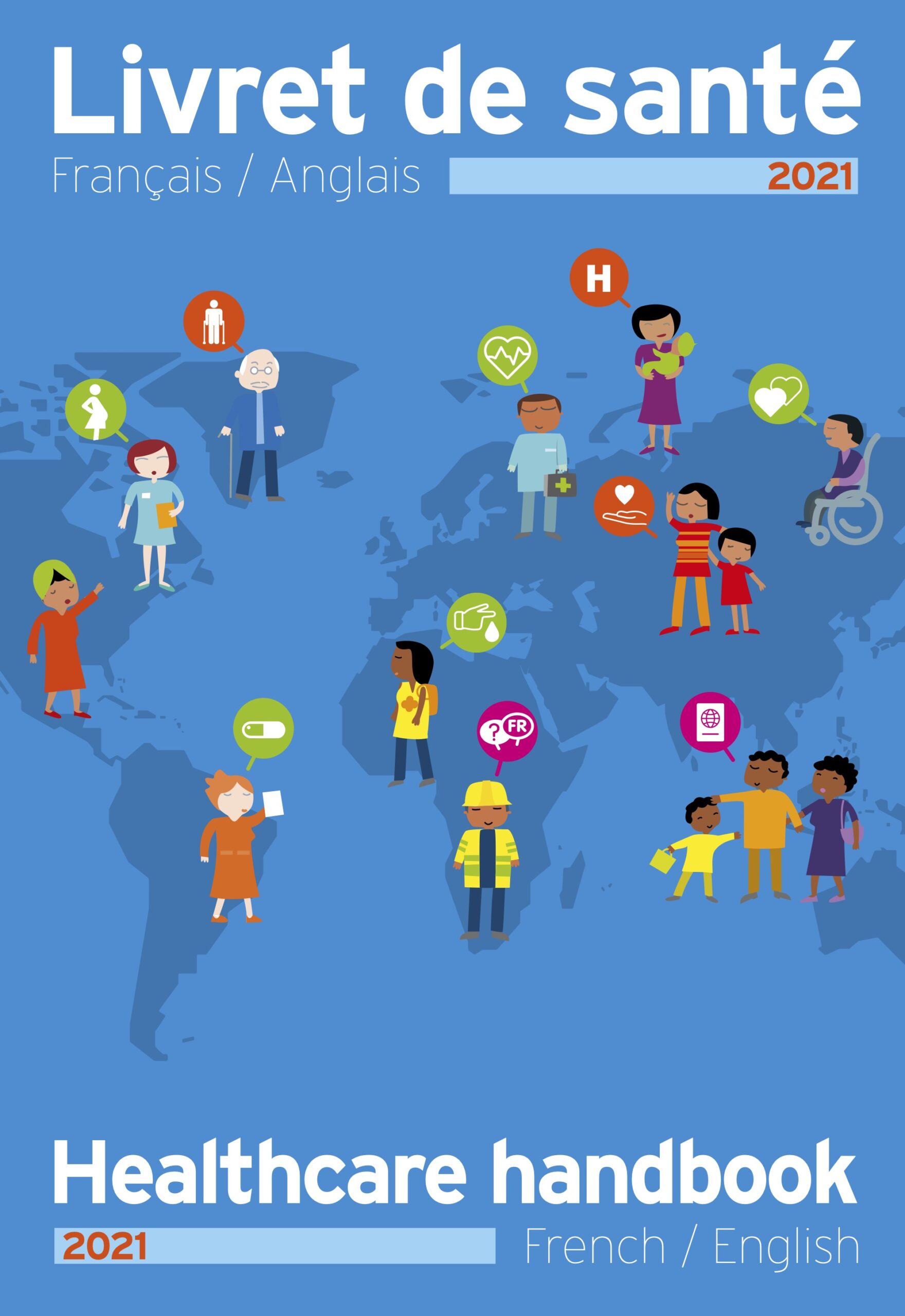Resources
A searchable online library of policy and advocacy documents about travelling or relocating with HIV.
Trends in new HIV diagnoses and factors contributing to late diagnosis among migrant populations in EU/EEA countries, 2014 to 2023
Migrants are a diverse group, with various drivers of migration and various HIV risk factors. As the HIV epidemic evolves, public health strategies must adapt to shifting epidemiological trends, refining approaches to prevention, testing, and treatment to achieve the Sustainable Development Goals set for 2030. To guide these programmes, this study aimed to assess trends in new HIV diagnoses among migrants in EU/EEA countries from 2014 to 2023, focusing on sociodemographic factors associated with late diagnosis.
- Author
- Reyes-Urueña Juliana et al.
- Reference
- Euro Surveill. 2024;29(48):pii=2400759
- Countries
- Spain, Estonia, Czech Republic, Portugal, Hungary, Malta, Ireland, European Union - EU, Italy, Latvia, Lithuania, Iceland, Luxembourg, Finland, Poland, Norway, Bulgaria, Romania, Austria, Croatia, Slovakia, EECA - Eastern Europe and Central Asia, Cyprus, Slovenia, Belgium, Denmark, France, Germany, Greece, Netherlands, Sweden
HIV and migrants in the EU/EEA Monitoring the implementation of the Dublin Declaration on partnership to fight HIV/AIDS in Europe and Central Asia: 2024 progress report (2023 data)
This report presents the results of a survey among EU/EEA Member States in relation to the HIV epidemic among migrants and current national prevention interventions, policies and barriers to the public health response.
- Author
- European Centre for Disease Prevention and Control (ECDC)
- Reference
- November 2024
- Countries
- Poland, Bulgaria, Romania, Finland, Croatia, Slovakia, Austria, Cyprus, Slovenia, Spain, Estonia, Czech Republic, Portugal, Hungary, Malta, Ireland, European Union - EU, Italy, Latvia, Lithuania, Luxembourg, Belgium, Denmark, France, Germany, Greece, Netherlands, Sweden
Proposition of post-migration infections among foreign-born individuals discovering their HIV infection in France, 2012–2022
In this study, a mathematical model was applied to data from the mandatory declaration (OD) of HIV in France, in order to estimate the proportion of infections after arrival in France among people born abroad who discover their seropositivity in France. Nearly half of people born abroad who discover they are HIV-positive in France were infected after arriving in France. This proportion varied according to the mode of infection, country of origin and region of residence. These estimates could provide a more appropriate approach to HIV prevention and care for people born abroad.
The study report is in French, please use Google translate for access in English.
- Author
- Santé Publique France
- Reference
- Bulletin épidémiologique hebdomadaire, 2024, n°. 23-24, p. 542-548.
- Countries
- France
High proportion of post-migration HIV acquisition in migrant men who have sex with men receiving HIV care in the Paris region, and associations with social disadvantage and sexual behaviours: results of the ANRS-MIE GANYMEDE study, France, 2021 to 2022
This cross-sectional study focused on ≥ 18-year-old MSM born outside France, receiving HIV care in the Paris region. Information on migration history, socioeconomic condition, sexual activity, and health was collected in May 2021–June 2022 through self-administered questionnaires and medical records. Post-migration-HIV-acquisition rate and delay between arrival in France and HIV acquisition were estimated from biographical data and CD4+ T-cell counts. Predictors of HIV acquisition within 1 year after migration were determined using logistic regression.
- Author
- Romain Palich et al.
- Reference
- https://doi.org/10.2807/1560-7917.ES.2024.29.11.2300445
- Countries
- France
National Asylum Developments Database
Presents legislative, institutional and policy developments related to asylum since 2018. Searches can be narrowed down by: Country; Year; Type of development: legislative, institutional or policy Thematic area: access to procedure, access to information, legal assistance and representation, interpretation services, special procedures, procedures at first instance, reception of applicants for international protection, detention, procedures at second instance, country of origin information, statelessness in the asylum context, content of protection, return of former applicants, resettlement and humanitarian admission programmes. Details on each development and further analysis can be consulted in the Asylum Report series. There is also a database of "Country of Origin Information" with comprehensive information on health system.
- Author
- European Union Agency for Asylum
- Reference
- Updated regularly since 2018
- Countries
- Romania, Croatia, Slovakia, Finland, Cyprus, Slovenia, Austria, Estonia, Czech Republic, Spain, Hungary, Malta, Portugal, Ireland, European Union - EU, Italy, Latvia, Lithuania, Luxembourg, Poland, Bulgaria, Belgium, Denmark, France, Germany, Greece, Netherlands, Sweden
HIV and Migrants – Monitoring implementation of the Dublin Declaration on partnership to fight HIV/AIDS in Europe and Central Asia: 2022 progress report
In 2022, a ECDC survey was used to collect data to monitor the implementation of the 2004 Dublin Declaration. The survey contained specific questions in relation to the HIV epidemic among migrants, in addition to questions relating to the current national prevention interventions, policies and barriers to the public health response. This report presents the results of the survey.
- Author
- ECDC
- Reference
- 2022
- Countries
- Norway, Slovenia, Belarus, Estonia, Austria, Turkey, Bosnia and Herzegovina, Hungary, EECA - Eastern Europe and Central Asia, Czech Republic, Kazakhstan, Ireland, Spain, Malta, Kyrgyzstan, Italy, Portugal, Kosovo, Montenegro, Latvia, Georgia, Moldova, Lithuania, Europe (Northen, Central, Southern and Western), Tajikistan, Luxembourg, Ukraine, Poland, Bulgaria, Iceland, Romania, Croatia, Finland, Slovakia, Azerbaijan, Cyprus, Belgium, Denmark, France, Germany, Greece, Netherlands, Switzerland, Sweden, United Kingdom
When and Why? Timing of Post-Migration HIV Acquisition among Sub-Saharan Migrants in France
This study aims to estimate the timing of post-migration HIV acquisition among sub-Saharan migrants in France and to understand the correlates of post-migration infection.
- Author
- Anne Gosselin et al.
- Reference
- Sexually Transmitted Infections, 2020, 96 (3), pp.227--231.
- Countries
- France
Blingual Health Book
Available in 17 languages, the Bilingual Health Books are designed to help everyone better understand the French health protection system, rights and procedures. They cover the main health issues and provide practical information for everyday life.
- Author
- COMEDE
- Reference
- 2021
- Countries
- France
